“We had a lot of time to feel frustration”: An interview with Small Body director Laura Samani
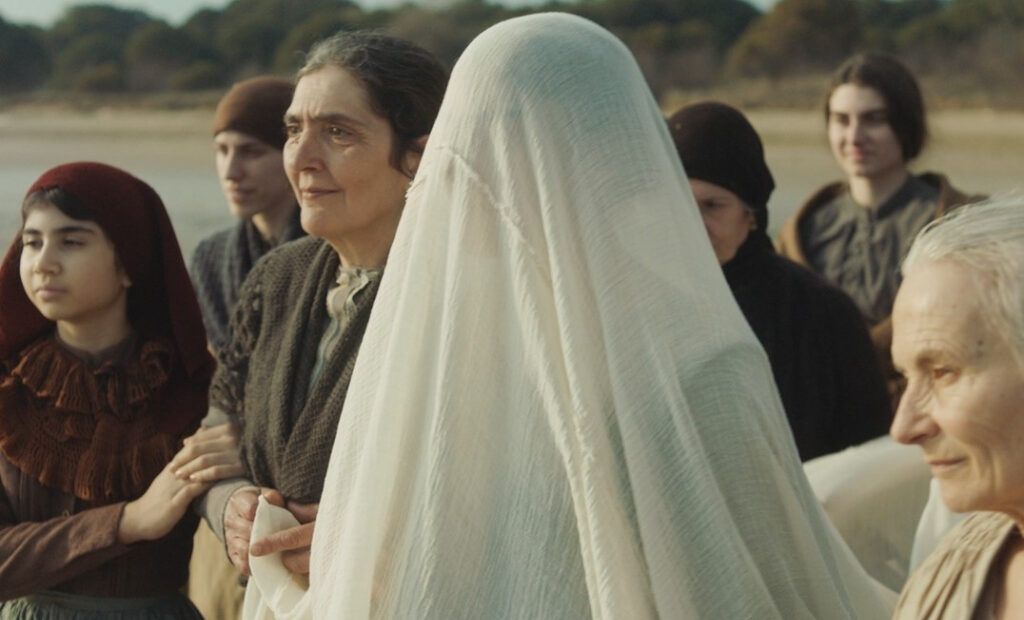
The Semaine de la Critique celebrated its 60th anniversary at this year’s Cannes. Part of the selection of the independent parallel section of the festival is Small Body (Piccolo Corpo). The first feature-length piece from director Laura Samani centers around a woman who, determined to get her stillborn child baptised, sets out to a legendary sanctuary which is believed to bring back the dead for a single breath. On her way, she crosses paths with the ambiguous Lynx, who attempts to kidnap the woman.
On a makeshift beach bar on the Croisette, we sat down to chat with the Italian filmmaker about the inspiration for this project, her unconventional characters and how the pandemic influenced the production.
How does that feel to have your feature film debut screened at Cannes?
It’s amazing. It’s like a breath of air after the year that we’ve been passing through. But basically everyone that shot in the last year has been going through the same. It’s really rewarding – especially the fact that the festival is trusting me again. Because I was here already in 2016 in Cinéfondation with a short film. So after five years, to be here again, it’s like, “okay, they’re following me”. That’s nice.
How long have you been working on Piccolo Corpo?
Five years. Right after the short film, I was already thinking about it and, fun fact: I met the majority producer, the Italian one, here in Cannes, but we’re from the same region.
What a great coincidence!
Yes, it is.
So how did the story come about?
Because of the short film, there was an old man in my region watching it. And he was curious to know if I knew anything about Trava, which is the sanctuary that still exists in my region. And I knew nothing about it. So I was like, “Tell me more about it”.
It’s really similar to what happened to Agata in the film, that someone – an old man – tells her about it. I got obsessed with it, because it was pretty common back in the 16th Century, in the Alps, to have this kind of breath sanctuaries or feather sanctuaries. They call them feather sanctuaries because they used a feather to check if the breath was present or not.
And it was really common, and nobody knows about it now. I didn’t either. So I started doing some research. It was really impressive, because usually it was the men taking the journey, because it was dangerous, long, and the women were lying in bed.
And I was like, “No, if I were a mother, in that condition, I would go myself”. So me and the co-writers, we started asking ourselves, “Why is she going alone? How is her family?” We spun a spiderweb around this idea.
In a situation like Agata’s, you ask yourself, “Where does all the love go, for the person that has been growing inside you for nine months?” What happens to your love if the baby is not alive? I felt that Agata’s journey was a strong way to honour that.
Yeah. Especially because, as I said, it was really common in back in the 16th Century, but in our region, there are witnessed miracles of this kind until the 20th Century. So it’s yesterday.
I decided to set it at the beginning of the 20th Century, because it’s before Freud. You didn’t have any other tool to deal with mourning. Before Freud means that – at least in Italy, because I as well grew up Catholic-educated, not because my family is really Catholic at all, but because it’s like ground zero of culture. Also because of the history of art, and so on. So if it’s the only tool you have to deal with big things in your life, you need a miracle then, because you cannot develop it in your mind in a psychological way.
Did you ever consider setting Small Body in the present day?
I think maybe in the beginning, when we were still in school, we asked ourselves if we really wanted to dive into period film, because it’s really expensive and you have some rules to stick to. But we immediately got rid of these doubts, basically because I didn’t want to do a proper period drama, but more like a fairy tale in a way. I think you can tell from the film that we – of course, all the research from set design, costume design and the language – are pretty respectful of the time. But we took some crazy decisions because, I mean, it’s fun.
I found it a brave decision to include a non-cis character in a period drama, because that’s not something you usually see.
Well, at the beginning, Agata was traveling alone and it was pretty boring, to be honest with you. Of course, a lot of things are happening, but we felt the necessity to have someone help her. Not just because of the classical buddy character in any hero’s journey, but in a way to be an antagonist, too.
So the character of Lynx changed shape a lot during the different drafts. First, it was non-existing, then it was a woman, then it was a really young woman. We did some historical research and we were asking ourselves, “If Agata has roots, and a good family, even though they don’t understand her mission, they love her, you can tell…”
We were working with opposites. So Lynx wouldn’t have a family or if there is a family, there’s been a falling out, and so on. The two had to be like Yin and Yang. So we were asking ourselves, if this character doesn’t have roots, but it’s a woman, what kind of solutions does she find to survive? So the very first idea was to have a woman hidden in trousers.
But then, when I met Ondina, and we started working together, we weren’t properly attached to the script. We didn’t start rehearsing with the script. We were more doing exercises, emotional exercises, like we were walking in the woods in silence together to know each other.
And I don’t really want to properly answer to the question of their identity in the film, because I really believe in fluidity. Like, two years ago, I would have said, “Lynx is a she and she’s hidden”. But I don’t think of the character like this anymore. So I don’t want to box the character into definition, because it’s a person now. I love Lynx, because I know Lynx and it’s really contemporary.
So it’s bizarre because we went really far into history, and then it’s really contemporary, especially for what is going on in Italy at the moment. Because we’re still fighting to have a law that condemns homophobic crimes, transphobic crimes and disability crimes and misogynist crimes. We don’t have it yet, which is crazy. So this is really contemporary, because in a way, what happens to Lynx with their family, it’s pretty similar to what happens nowadays in Italy, which is insane because more than 100 years have passed.
As you say, in the beginning, Lynx is almost an antagonist, but they redeem themselves. It is handled in an unusual manner as well. Was this also a natural development that came with discovering the characters?
I would say that at the beginning, Agata, of course, is angry with Lynx. But she knows she needs help. So it’s not like, “Okay, I’m gonna trust this kid”, but it’s like, “I need them. So I’m going to follow them”. And the big twist comes inside the mine; it’s surprising but Agata turns out to be stronger. Because until that moment we’ve been experiencing Lynx as the strong one, the practical one.
But there are more aspects to Lynx so yes, I think they can redeem themselves when they come back, but the most important thing is that the central part of the film, when they let’s say, fall in love… There are so many different types of loves, so in a way they do fall in love. At the fireplace, when they sing together, that was not in the script.
We shot most of that part in two days – when they come out from the mine until when Lynx tries to steal the box. It was in two days because we shot in continuity. And that moment, I think it was the the peak of what we were experiencing, because of our bond, the three of us, I mean. Because of COVID of course, and because of the pressure we felt about the pandemic, we didn’t know how many days we could shoot now, we were worried about infections, were really close also physically, to one another… And so that the scene at the fireplace, to give you an example, was not planned that way. They were supposed to sit there and do, I don’t even remember what… And then I called Ondina, and I told her, “Could you please learn this song because they’re lighting up the fire? Could you please learn it in like 20 minutes?’”
And look what happened! Because they they’re really good friends now. So to answer shortly, it’s something that came with the character of Lynx, but also it came in with the relationship that the three of us had on set.
So finding the actors had a big influence on the creation of the characters. Could you tell me about the casting process?
In 2017, I did an open casting call to find Agata. Initially just a momentary Agata, because I had to shoot a promo to raise funds, to test the troop and to understand if we liked each other. So I was doing this casting. For Agata, I imagined someone really fragile and anxious, I would say, with a kind of fever, like, “I have to go”. And Celeste Cescutti showed up at the casting and she was nothing like what I was looking for. But she was her.
She’s a debutant first of all. And she’s really dignified. She has a lot of dignity. And she’s silent. She’s very shy, but she’s strong. So all the adjectives that you can imagine that I had in mind, she was the opposite. I was like, ‘”What?” And it’s not rational. I mean, it’s like when you fall in love with someone. So we did the promo together, and we both knew that it was perfect. She was perfect.
With Ondina Quadri, with Lynx, it was much more difficult. First of all, because the character was changing in my mind constantly. But second of all, once I decided that it was a non-conventional gendered character, I also wanted the dialect – because Lynx speaks a really particular dialect.
And Ondina is not from my region, she’s from Roma. She’s a known actress in Italy. She does a lot of experimental theater plays, and she’s already done two films, I think. But we have a really good friend in common, who was pushing me to meet her. And I didn’t want to at first, because I was like, “No, they have to be from the region, maybe non-professional…”
But I had had a list of 1000 girls and I was desperate, so I met Ondina. We had lunch together, and it was her.
The dialects may not be the first thing for a non-Italian speaker to notice, but the scene in which Agata and Lynx bond over the different vocabulary they have for certain objects clearly stands out. What was it about language that was so important to you?
I’m from Trieste. So we have a dialect, which is Venetian-influenced, even though I don’t speak it, because my mother is from the western side of Italy. My father is from Trieste, but at home we talk Italian. In Italy, we had a really heavy Italianisation of the language. So it’s an invention, the Italian language. And we have a huge richness of dialects, which have been forbidden, in a way. Especially during facism, you couldn’t speak in dialect. You had to talk in Italian.
So for me, it’s a political matter first of all. In the poor sides of the country – Agata comes from a fishermen place and Lynx lives in the middle of nowhere – they’re still speaking in dialect, luckily. Also it’s historical, they had to speak in dialect. But also it’s a political matter, because of course, I could have shot it in Italian. But I didn’t want to, because we’re losing so much.
If you notice in the film, the woman bandit, she says “Va, frutte” in that dialect. Frutte means fruit. If there is someone younger than you, you call them fruit, because they are the fruit of the parents. In Italian we say “figlio”, which doesn’t mean anything. Dialect, it’s precious.
Earlier you mentioned that the film was shot in the middle of the pandemic. How did this affect the process?
We started shooting in February 2020. We shot for one week, then there was the lockdown in Italy. We restarted in November and we got a lot of infections on set, even though we were following the protocol, we were doing swab tests every three days. It happens.
We had to stop and go four times. To shoot five weeks, it took us one year.
But the bright side of it is that we had a lot of time to feel frustration. I mean, I don’t want to make light of it. Because of course it was terrible, especially on a personal level for a lot of us and our families and friends. Many of us lost someone. But talking about the film, of the advantage we had, it’s something that is rare because it’s expensive: I had the time to think. And they had the time to think. When we came back, we were so hungry to shoot, so hungry to succeed, in at least finishing the shooting. And we perceived, I think, the same frustration that – of course, it’s not the perfect parallelism – but we knew what frustration was, like Agata. And maybe like Lynx with their parents.
And we had snow, because we shot in continuity; we wouldn’t ever have had it originally. So when it’s snowing, it’s snowing for real.
It was shot in the region Venezia?
Friuli Venezia Giulia. It’s on the border between Slovenia and Austria. There are so many good places, and it’s such a small region. We have both the sea, the mountains, the flatland. Yeah, it’s really a nice place to be.
To prepare for the film, did you have any influences or references that were specific to the film you wanted to make?
Yes and no. My co-workers hate me because I am never good at giving references, because usually before shooting, I don’t watch films. I walk in the woods, I talk to people, but I don’t watch films. So I find myself quoting always the same two films, which are not useful, usually.
Well, to work with the DP – who is great, but was a newcomer in my crew; we never worked together before – we had to find some common ground to understand each other. I knew that I wanted a mobile camera, to walk with them and not to have like a drone and all these wonderful things, but really to feel the heaviness, the steepness of the ground and everything. We didn’t watch films together but we talked about Andrea Arnold, who I love. And we talk a bit about László Nemes Jeles. It was more about “Okay, this is the language”.
Mostly the references were not properly cinematographic, but more pictures, photography. Especially with the costume designer and with the set designer, we found two or three amazing books of pictures from my region, that were really good. The problem is that, of course, taking the pictures of poor people, farmers and things like that, were middle class photographers. So there is this sense of “striking a pose”. But especially for the costumes, what we found interesting is that, of course, the pictures were black and white, sepia. But in the past they put paint on it, to put the colour back. And so they would really pop. They were like, sepia, but then like a pink shirt, you know, things like that. So we used that to do the crazy things I was talking about. Detaching a bit from the historical way of putting down this thing. Like the bandit woman wears a collar, which is insane. I mean, she looks like a cardinal in a way. And Lynx has this red scarf, which we love because it reminds us of the partisans in Italy during the Second World War. Things like that.
So yes, the references were more about pictures than films, I would say.
Thank you!
Selina Sondermann
Small Body (Piccolo Corpo) does not have a UK release date yet.
Read more reviews from our Cannes Film Festival 2021 coverage here.
For further information about the event visit the Cannes Film Festival website here.

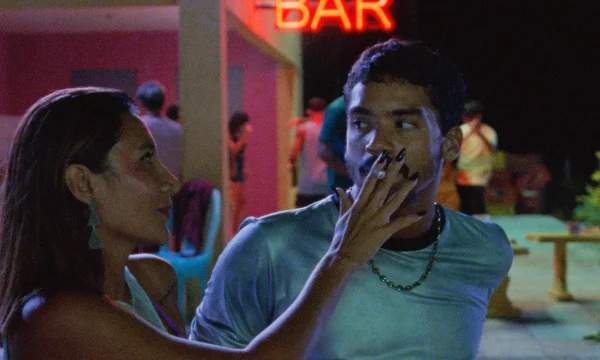
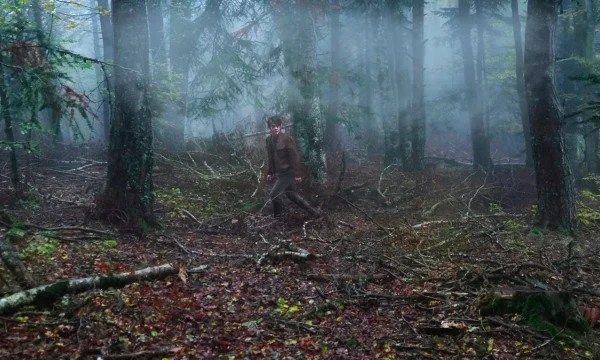
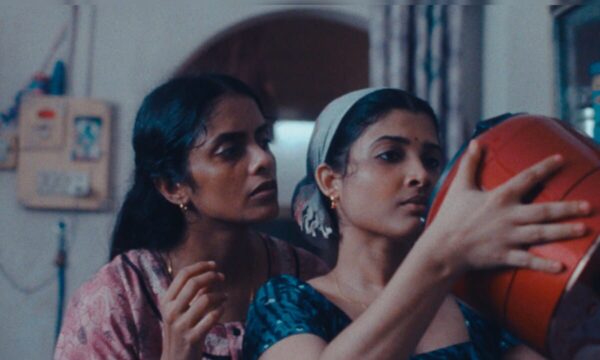
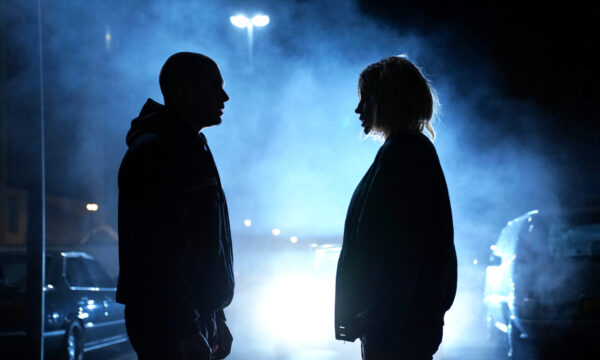
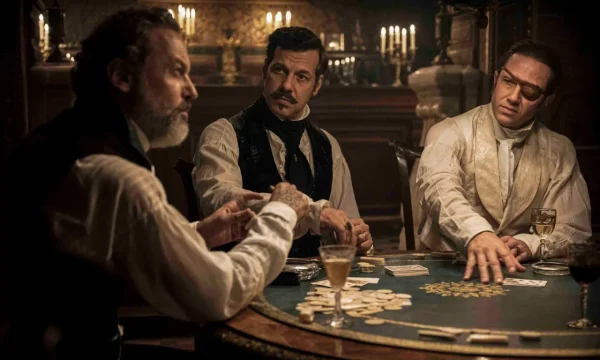
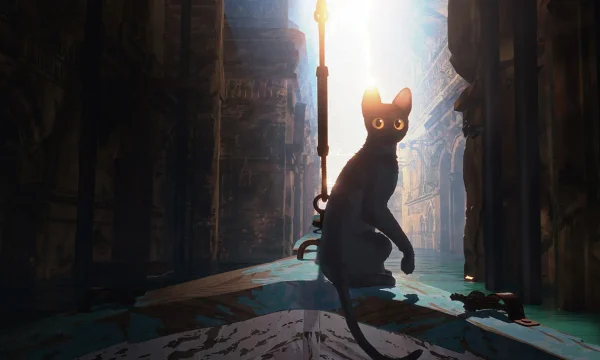
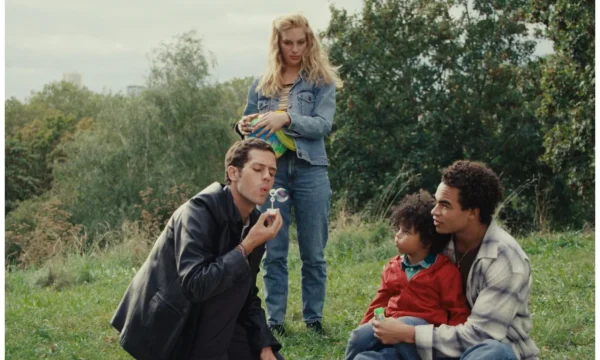
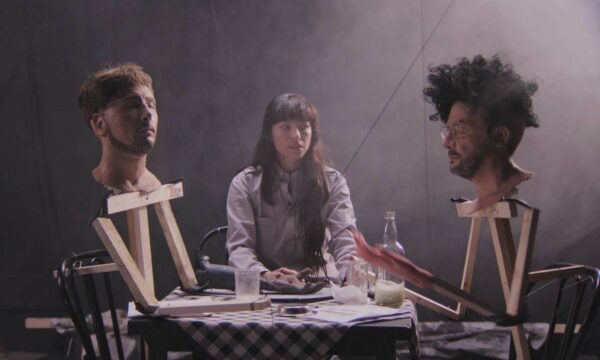
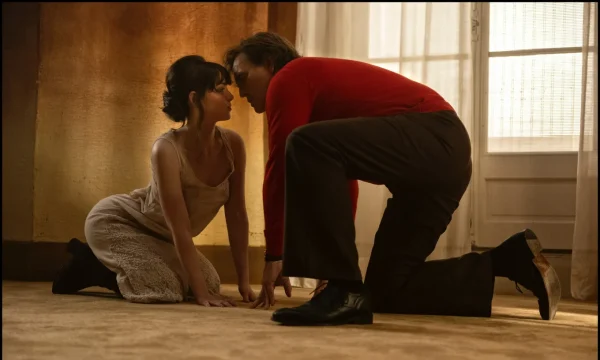












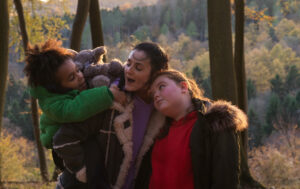

Facebook
Twitter
Instagram
YouTube
RSS